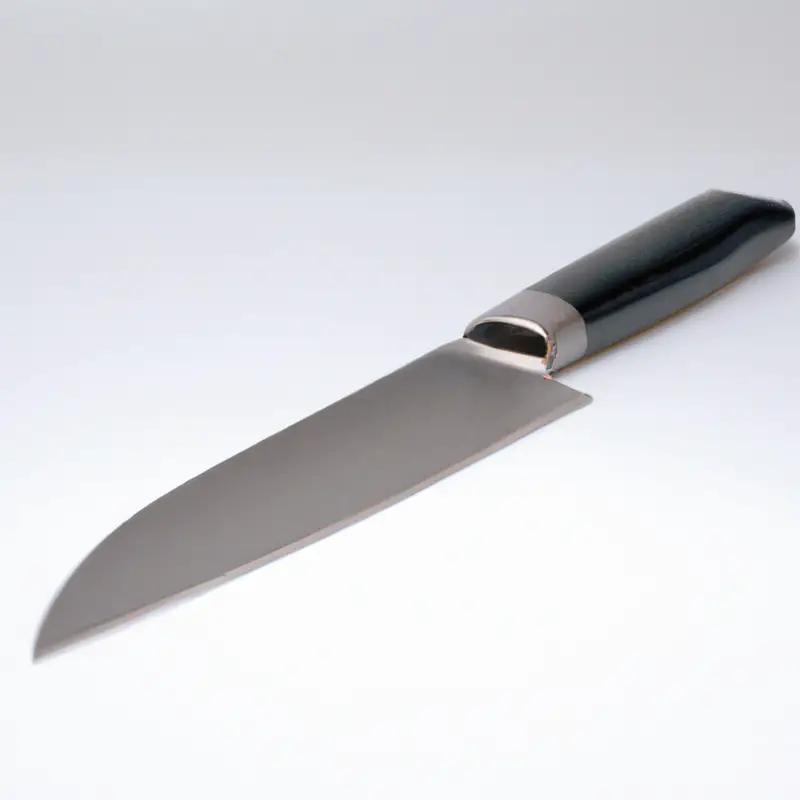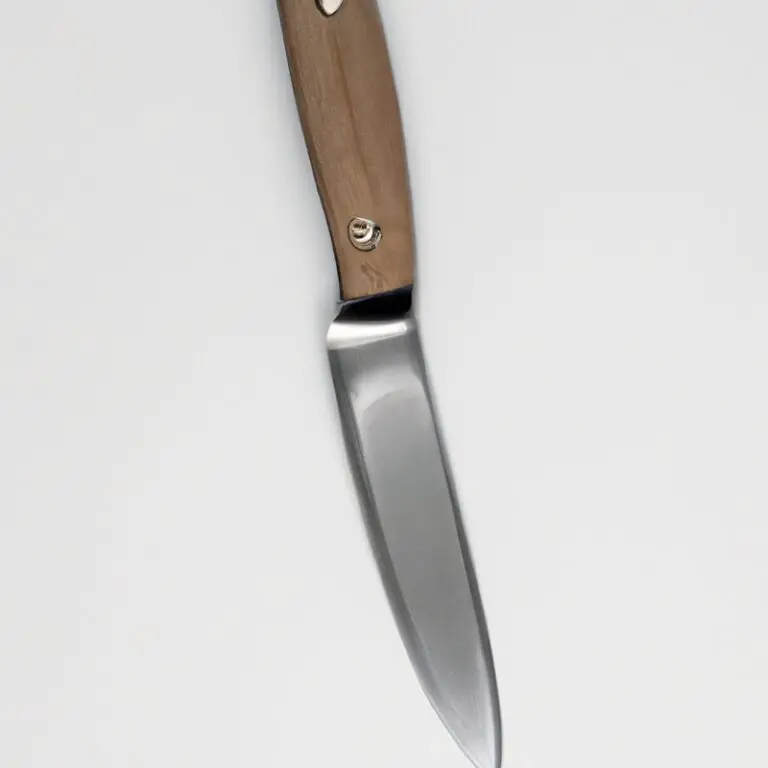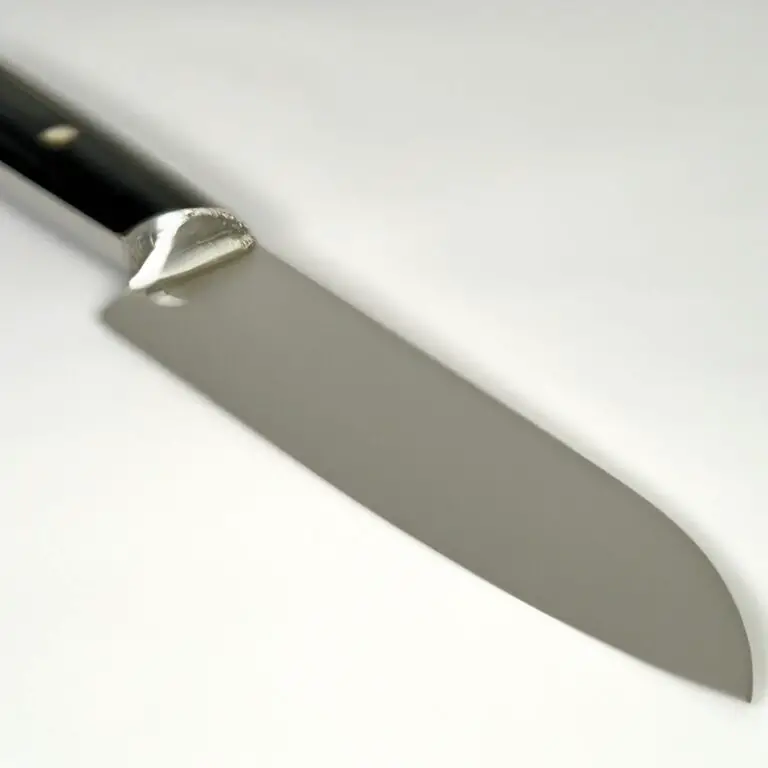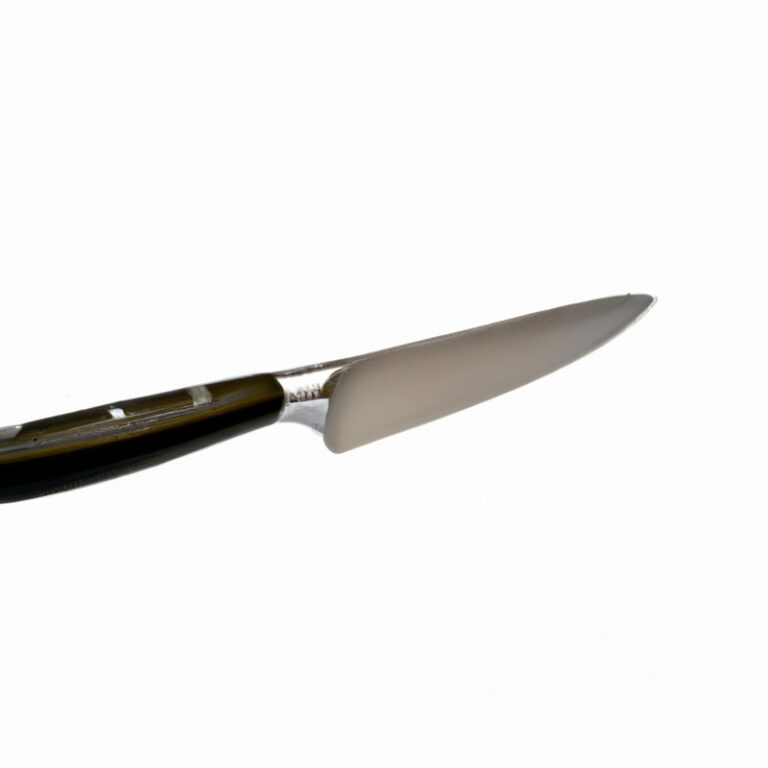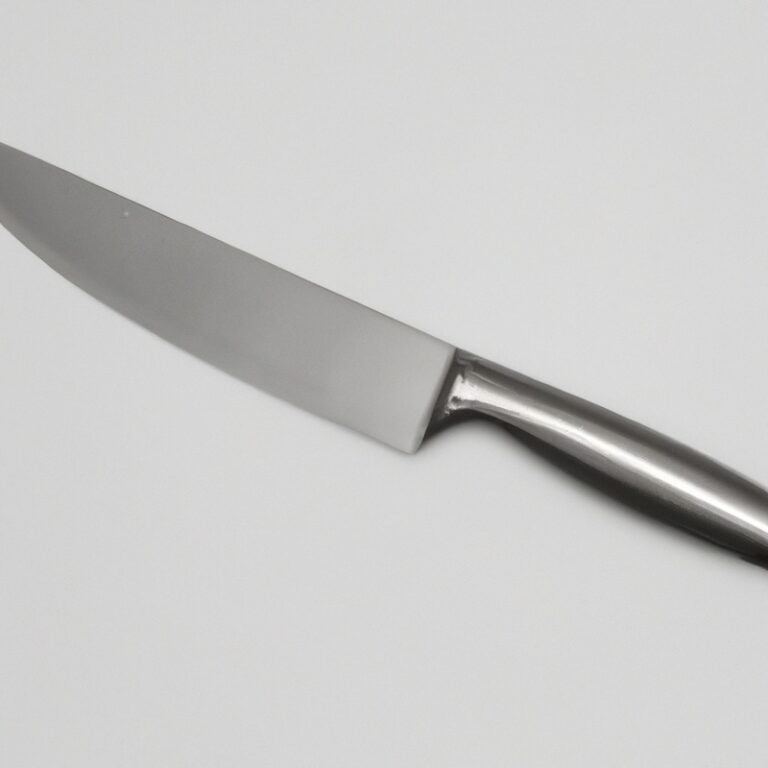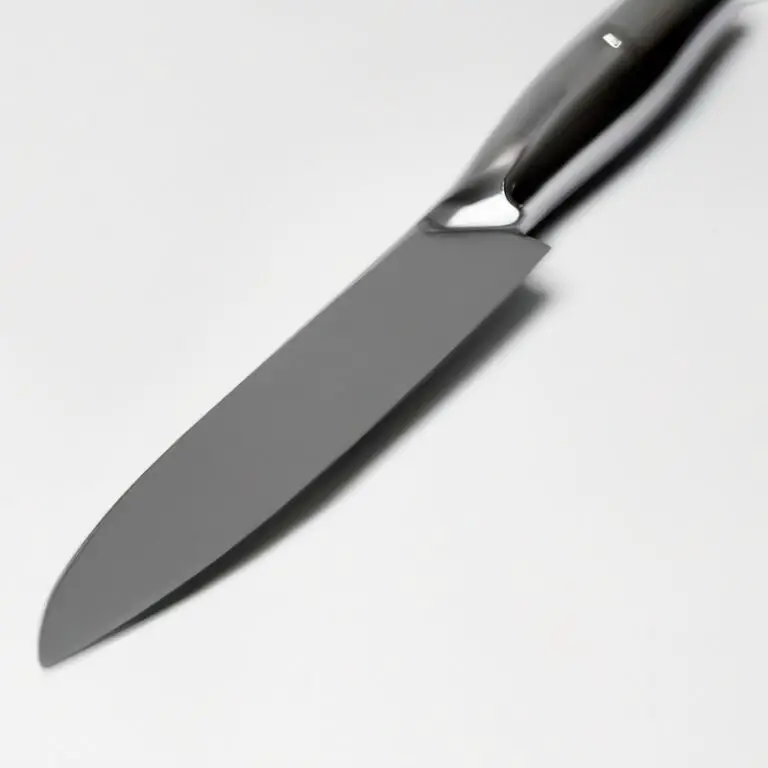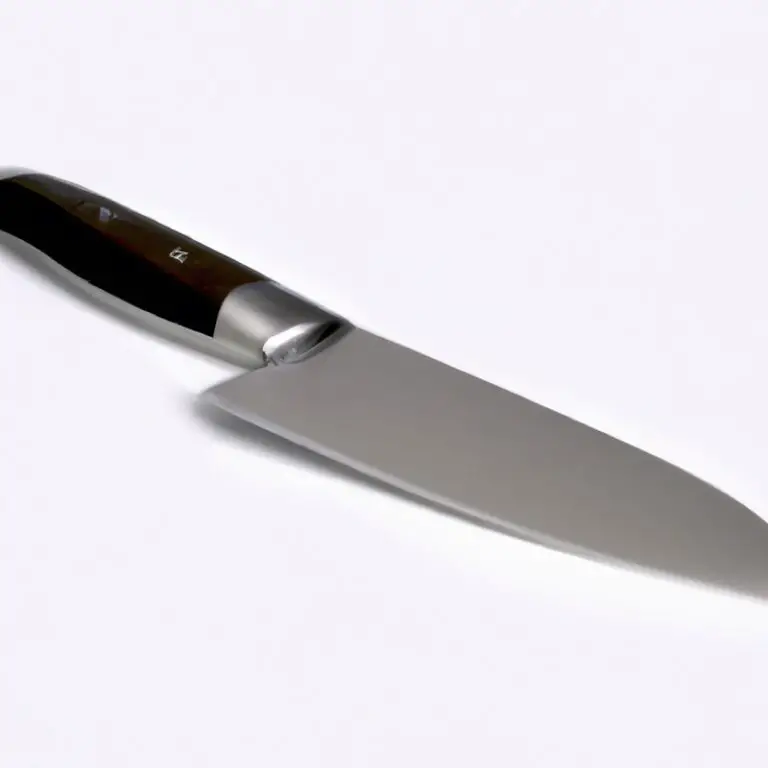What Is The Best Way To Grip a Paring Knife For Precision Cutting? Expert Tips
Key Takeaways:
- The best way to grip a paring knife for precision cutting is to hold it with three fingers on the handle and your thumb and index finger on the blade.
- A proper grip reduces strain on your hands and improves your control of the knife, resulting in more accurate cuts.
- Experiment with different grips to find the one that works best for you and the task at hand.
- Maintaining a sharp blade is also essential for precision cutting, so make sure to regularly sharpen and hone your paring knife.
Looking to sharpen your culinary skills? If you’re serious about precision cutting, then mastering the art of paring knife grip is a must.
Correct hand positioning, finger placement, and pressure adjustments can make all the difference in achieving consistent cuts, accuracy, and control.
In this blog post, I’ll guide you through the best techniques for optimal paring knife grip, customizing it to your personal preference, and avoiding injury. Get ready to elevate your culinary game and enjoy the satisfaction of perfectly sliced fruits and vegetables!
| Pros | Cons | |
|---|---|---|
| Holding the handle with all fingers | Provides better control and stability for the knife | May cause strain on the wrist and fingers over time |
| Pinch grip | Eases the strain on the wrist and fingers | May not provide enough control for precision cutting |
| Hybrid grip | Combines the benefits of both holding the handle and pinch grip | May not be the most comfortable grip for all individuals |
Correct hand positioning for paring knife precision
Proper hand positioning plays a crucial role in achieving precision and accuracy while using a paring knife. To hold a paring knife correctly, place your index finger and thumb on opposite sides of the handle, allowing your other fingers to wrap around the handle naturally.
Ensure that your grip is firm but not too tight to avoid losing control of the blade.
The blade should be positioned perpendicular to your working surface to maintain consistency in your cuts. Lastly, keep your elbow close to your body and use your wrist and arm to make precise cuts.
With proper hand positioning technique, you can enhance your paring knife skills and achieve professional-level cutting results.
Grip techniques for optimal paring knife control
Grip techniques are essential for achieving optimal paring knife control during precision cutting. The grip should be firm but not too tight, with the thumb and index finger gripping the handle for primary control and the middle finger providing additional support.
The pinky finger should rest on the handle for balance and stability.
It’s imperative to maintain a consistent grip throughout the cutting process, adjusting pressure as needed for accurate cuts. Regularly practicing proper grip techniques helps enhance control and prevent injury.
Finally, customizing the grip to personal preference can further improve comfort and precision.
The role of finger placement in paring knife grip
One of the most important factors in achieving precision cutting with a paring knife is proper finger placement in your grip. Your index finger should be placed on top of the blade, near the handle, providing control and stability.
Your middle finger and ring finger should grip the handle, while your pinky finger should rest on the surface of the cutting board to steady your hand.
By placing your fingers in the correct positions, you can achieve greater cutting accuracy and reduce the risk of injury. Remember to maintain a firm yet comfortable grip, and adjust your finger placement as necessary to suit your personal preferences and needs.
Finding the right handle size for a comfortable grip
Finding the right handle size is crucial for a comfortable grip and efficient use of a paring knife. A handle that is too small or too large can cause discomfort, wrist strain, and ultimately affect precision cutting.
It’s essential to choose a handle that fits comfortably in your hand, allowing for a firm grip without applying unnecessary pressure.
A general rule of thumb is to choose a handle that allows for a three-finger grip, with the index finger resting on the top of the blade for control. Consider the size of your hand when selecting a handle size.
Handles come in various shapes and sizes, so try holding the knife in your hand before making a purchase to ensure a comfortable fit.
Additionally, some handles offer extra grip features like ridges or texture, providing even more stability and control during use. Remember, finding the right handle size is critical in achieving precision cuts and enjoying a comfortable and safe experience when using a paring knife.
Enhancing paring knife control with proper thumb placement
Proper thumb placement is key for enhancing paring knife control. Placing your thumb on the spine of the knife helps to guide the blade, providing stability and support.
This technique allows for better control and precision when making cuts.
It is important to ensure that your thumb is placed securely on the spine, but not too forcefully, to avoid discomfort or injury. Practice with this technique to improve your paring knife skills and achieve consistent cuts.
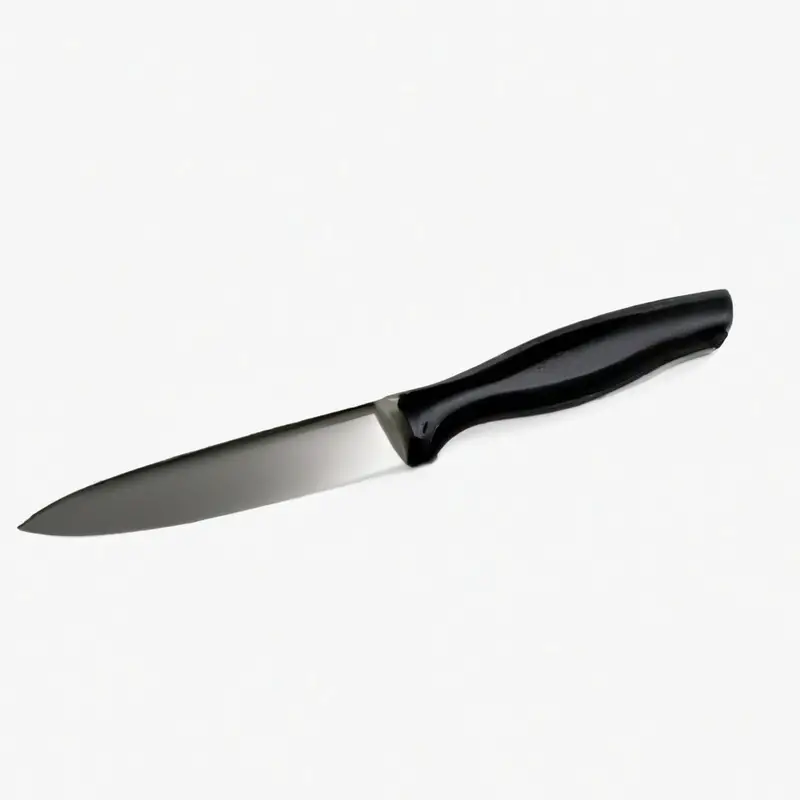
Achieving consistent cuts through grip and pressure adjustments
Achieving consistent cuts through grip and pressure adjustments is crucial to precision cutting with a paring knife. Consistent grip provides stability and control, which is necessary for accurate cuts.
To achieve this, hold the knife with a firm but relaxed grip, with your index finger and thumb pinching the handle at the base of the blade.
Adjust the pressure on the blade by using your non-knife hand to guide the blade through the cut, applying more pressure for tougher items or thin-skinned fruits and vegetables. Practice is key to finding the perfect grip, but with proper technique and adjustment, you can achieve the consistent cuts needed for precise paring knife work.
The benefits of practicing proper paring knife grip
Practicing the proper paring knife grip comes with several benefits, including better precision, control, and safety. With a secure grip, you can regulate the knife’s pressure and blade movement and achieve consistent cuts.
Additionally, a proper grip helps prevent hand fatigue and decreases the likelihood of injuries due to the knife slipping.
Developing a good grip technique takes practice, but it is a crucial step to enhance your paring knife skills. By paying attention to your hand positioning, finger placement, and thumb placement while holding the knife, you can achieve optimal control for a more efficient and enjoyable cooking experience.
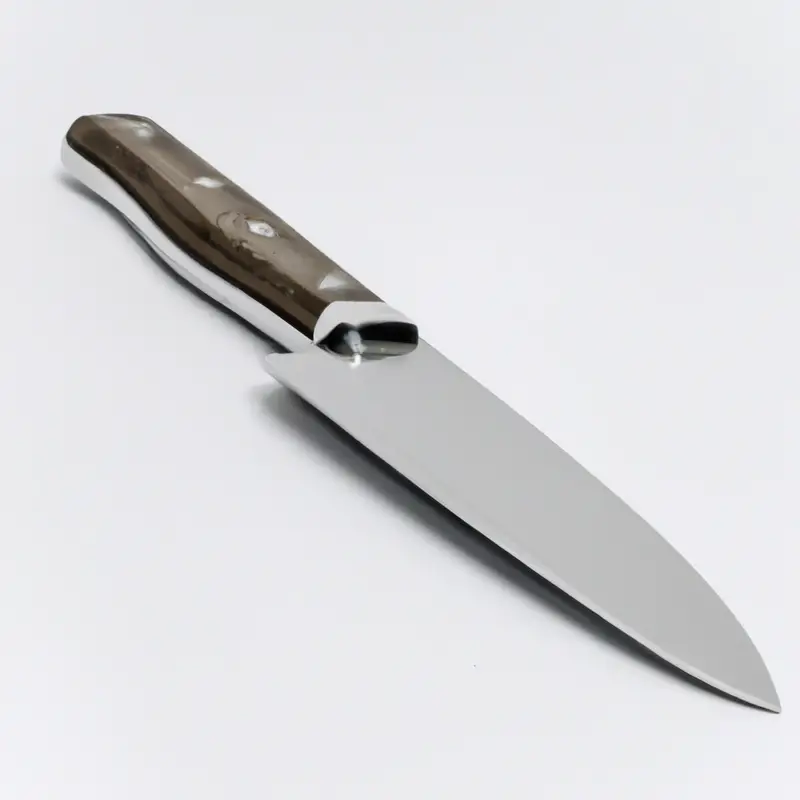
Avoiding injury with a secure paring knife grip
When gripping a paring knife for precision cutting, it’s essential to prioritize safety and avoid injury. One of the most crucial steps to prevent injuries is to maintain a secure grip on the knife at all times.
A proper grip includes holding the knife with your dominant hand, placing your thumb on the flat side of the blade, and wrapping your fingers around the handle.
To avoid slipping or losing control of the knife, keep your fingers away from the blade’s edge and use a comfortable grip that is not too tight or too loose. Another essential safety tip is to keep the blade pointed away from your body and always cut away from yourself.
Additionally, maintaining a sharp blade can also help prevent injury by reducing the need for force and pressure when cutting.
A dull blade may slip or cause you to use excessive force, increasing the risk of accidents. Overall, by prioritizing safe and secure grip techniques and regularly maintaining your paring knife, you can master precision cutting and avoid potential injuries.
Tips for cleaning and maintaining a paring knife grip
To maintain a safe and efficient paring knife grip, you need to keep your knife handle clean and dry after each use. Here are some helpful tips on cleaning and maintaining your paring knife grip:
- Do not put your knife in the dishwasher, hand wash it instead with mild soap and warm water.
- Dry your knife handle thoroughly after washing to prevent rust and corrosion.
- Avoid harsh scrubbing, abrasive cleaners, and steel wool. Use a soft sponge or cloth instead.
- If you have a wooden handle, oil it with food-grade mineral oil to protect the wood from drying and cracking.
- Avoid storing your knife in a damp or humid place to keep it from rusting.
By following these simple tips, you can keep your paring knife grip in top condition, ensuring a safe and efficient cutting experience.
Customizing your paring knife grip for personal preference
Customizing your paring knife grip allows you to achieve the most comfortable and secure grip for your personal preference. Some factors to consider when customizing your grip include the thickness and material of the handle, finger placement, thumb position, and pressure adjustments.
Experiment with different grips to find what works best for you.
Remember to keep your grip secure to avoid injuries and improve your control. Practice regularly to increase your dexterity and precision.
Regularly clean and maintain your paring knife grip to ensure a long-lasting, high-performance tool.
Final Verdict
Achieving precision cuts with a paring knife depends on having the right grip technique. Correct hand positioning, finger placement, handle size, thumb placement, and grip adjustments are all essential components of a secure and comfortable grip.
By practicing proper grip techniques, you can enhance your control over the blade, achieve consistent cuts, and avoid injury.
Remember to also clean and maintain your paring knife grip regularly. With these tips and techniques, you can customize your own grip for personal preference and take your precision cutting skills to the next level.
Trust us, it’s worth investing time and effort into perfecting your grip – your recipes and guests will thank you for it.
Happy chopping!

